Used coffee grounds are a somewhat controversial soil amendment for fig trees. Do they add beneficial nutrients and acidity to soil, or are they problematic for sensitive plant roots? Read on to discover coffee grounds’ potential benefits and uses, as well as when to avoid using them for your fig trees.
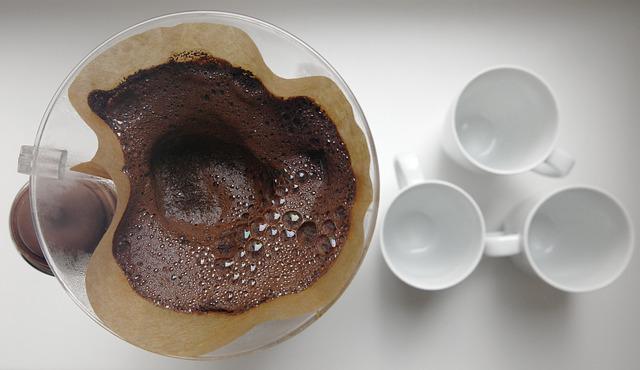
We may receive commissions from purchases made through links in this post, at no additional cost to you.
We are big coffee drinkers in my house. We seem to end up with heaps of coffee grounds every week – and gardening lore says coffee grounds can be good for plants (win-win!). But what about fig trees specifically? Is it a good or bad idea to use coffee grounds in growing figs at home?
Feeding in-ground fig trees with coffee grounds can provide nitrogen, acidity, and organic matter to the soil. However, putting coffee grounds directly in potted figs may make the soil too acidic and inhibit plant growth. For best results, compost coffee grounds before using as fertilizer.
There is a lot of conflicting information out there about the benefits and/or negatives of using coffee grounds in the garden. But how do I make sense of all of the opinions and research and apply it to growing fig trees? I dug deep, and here’s what I found out.
How Can Coffee Grounds Help Fig Trees?
Fig trees prefer to grow in mildly acidic soil with a pH of about 6.0-6.5. Coffee grounds are quite acidic, even after brewing. Depending on the type of coffee and how much water was used in brewing, coffee grounds have been found to have a pH as low as 5.0 (or even lower).
Growing a fig tree in soil with the correct pH will help it effectively absorb nutrients. A sprinkling of coffee grounds could be helpful in lowering the pH of alkaline soils, which is great news for figs. Check your soil’s pH and nutrient content using an inexpensive test kit to see if the soil needs more acidity.

Coffee grounds are also very nitrogen-rich. They tend to be about 1.5% nitrogen and are also a good source of magnesium and potassium, all of which are important nutrients for plant and soil health.
Fig trees can benefit from a little extra nitrogen early on in the growing season when they are sending out new shoots and leaves. Beware of giving your figs too much nitrogen though, because it can cause the tree to grow too vigorously and cause cracking of the branches and stems.
Learn more: When to Fertilize Fig Trees: A Complete Guide
Coffee grounds can also improve overall soil health – and healthy soil means happy fig trees. The grounds are broken down by bacteria, fungi, and earthworms, which pull the grounds deep down as they process them, aerating the soil.
Coffee grounds around a fig tree can also help repel pests, including slugs, snails, and ants (although industrious ants will probably just move them out of the way in a few hours).
How Could Coffee Grounds Harm Fig Trees?
The high acidity present in coffee grounds can be too much of a good thing. Just because fig trees like slightly acidic soil doesn’t necessarily mean your fig tree needs more acidity. If the soil becomes too acidic, your tree won’t be able to absorb nutrients properly. Splotchy, yellowing leaves could be a sign that there is too much acid in the soil.
There is also some evidence that the pH of coffee grounds changes during decomposition. That means adding them to your soil may not be a reliable way to lower the pH. If you need to add acidity to your soil, it’s a better bet to use something like sphagnum peat moss or an organic soil acidifier.
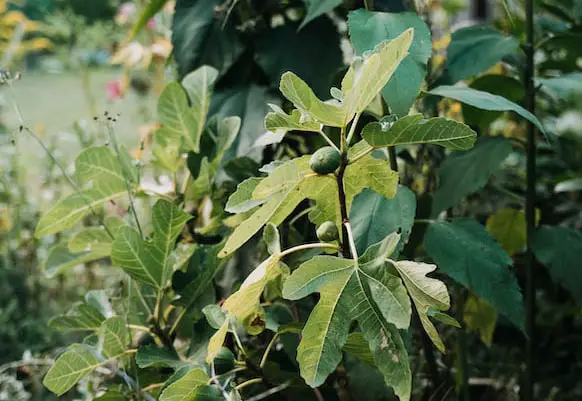
The nitrogen in coffee grounds can also cause problems for fig trees. Too much nitrogen makes a plant put its energy into leafy growth, instead of producing fruit. A layer of nitrogen-rich, acidic coffee grounds (especially if they’re wet) is also the perfect environment for mold to grow, especially in containers.
Bacteria in the soil love to break down organic material such as coffee grounds. However, the antibacterial and antimicrobial qualities of coffee grounds could also harm the helpful soil bacteria – particularly if used in large quantities.
Getting the giant bags of coffee grounds from your local cafe and spreading them in a thick layer around your fig tree may not be a good idea. Coffee is finely ground and therefore easily compacted. Heavy layers of coffee grounds may block moisture and airflow getting to the soil – bad news for your fig tree.
The residual caffeine in coffee grounds is another red flag. Even after brewing, coffee grounds can still have up to 8 mg of caffeine per gram, which is about as much as a cup of tea.
Some plants make their own caffeine as a defense mechanism, warding off other nutrient-hogging plants by inhibiting growth. A 2016 study found that applying coffee grounds directly to the soil significantly reduces plant growth, largely due to the caffeine present.
For more reasons to hold off on giving fig trees fertilizer (including coffee grounds), read Fertilizing Fig Trees: 8 Times it’s NOT Necessary.
Are Composted Coffee Grounds Better?
Perhaps the best way to utilize coffee grounds with fig trees is by composting them first. Once they are broken down, you get all the benefits of additional nutrients and soil-enhancing organic matter, without the downsides.

There are a few things to consider, though. Coffee grounds are not a good source of phosphorus, the mineral that helps fruits and flowers to form.
If you put coffee grounds in your compost, make sure to also dig in plenty of dead leaves, sources of phosphorus such as wood ash and banana peels, and perhaps a little lime to balance the pH. This combination will make a perfect, rich compost that you can then add to pots or use as a top dressing around your fig tree.
For best results, stick to about 10-20% of coffee grounds in your compost. Much more than that (around 30%) has been found to be detrimental to the final compost product, and therefore to plants. Too high a ratio could suppress plant growth, which would defeat the purpose of using compost at all.
Can I Feed My Fig Tree With Brewed Coffee?
Just like with coffee grounds, the nitrogen and acidity in coffee could be helpful to fig trees, but the caffeine may cause problems with growth. There has not been much (if any) research done on the use of brewed coffee with plants. Anecdotal evidence suggests that occasional applications (no more than once per week) of watered-down black coffee can be beneficial to potted plants such as fig trees.

If you occasionally want to pour the last of your cup of coffee into your potted figs, just make sure that it’s cold, unflavored, and black (no cream or sugar). Diluting the coffee with water could help with the potential issues of too much acidity or caffeine.
Observe your fig tree closely and see how it reacts; if there seem to be no negative effects, then you’re probably fine. If the leaves start yellowing or you see brown on the edges of the foliage, then the coffee may be adding too much acidity to the soil.
Fig trees planted in the ground won’t get much benefit from watering with brewed coffee. There are better sources of nutrients for a fig tree’s far-reaching roots, and brewed coffee won’t add any organic material to the soil. You would probably have to use a lot of coffee to see a decrease in pH – which would mean too much caffeine for the health of the tree.
How to Best Use Coffee Grounds with Fig Trees
To sum up all of the expert opinions, research, and practical fig growers’ advice, here are some recommendations for how best to utilize coffee grounds with fig trees:
1. Dry Them Out First
Dry used coffee grounds in the sun or on a paper towel-lined plate for a few hours; this will help guard against mold and keep them from clumping and causing issues with airflow and drainage.
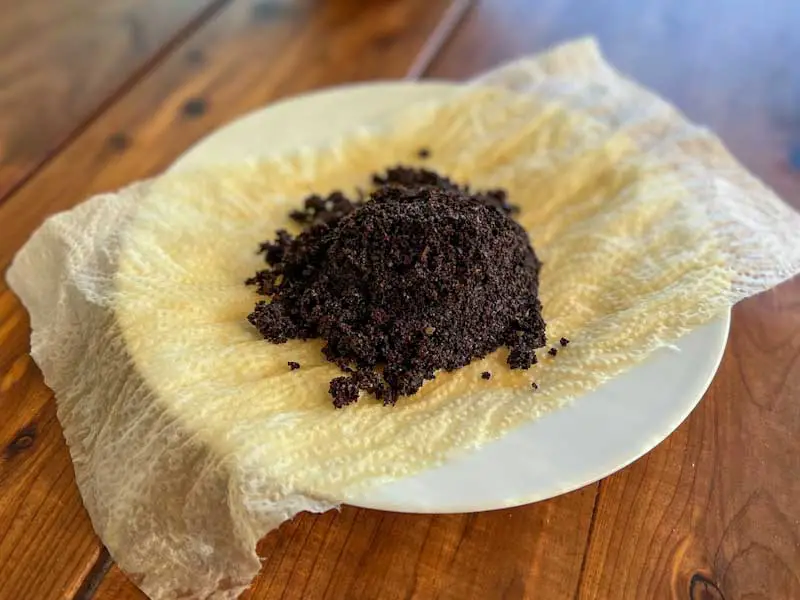
2. Use in Moderation
When in doubt, just use a small amount. Think of coffee grounds as a soil amendment, like garden lime or worm castings. A little can go a long way.
3. Use at the Right Time of Year
Coffee grounds are nitrogen-rich, so it’s best to only use them when your fig tree actually needs additional nitrogen. Try using coffee grounds on your fig trees in early spring, when the nitrogen will promote leafy growth. Too much nitrogen later in the season may decrease fruit production.
4. Check Your Soil pH
Is your soil pH too high (alkaline)? Fig trees like mildly acidic soil, so coffee grounds might be just the thing. But if your pH is just right for figs (ideally between 6.0-6.5) then the grounds could hurt more than help.
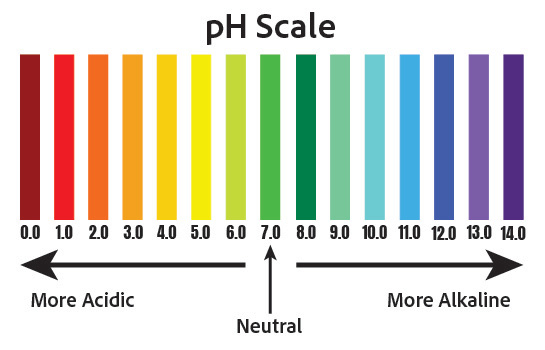
5. Use Sparingly as Mulch
A thick mulch of coffee grounds around a fig tree will get compacted easily, blocking water and airflow to the roots. Instead, spread a thin (about 1/2 inch) layer of grounds, then top with a thicker (3-4 inches) layer of coarse organic mulch.
6. Compost First
Try adding your coffee grounds to the compost heap instead of putting them directly onto the ground. Your fig tree will reap the nutritional benefits and avoid potential pitfalls.
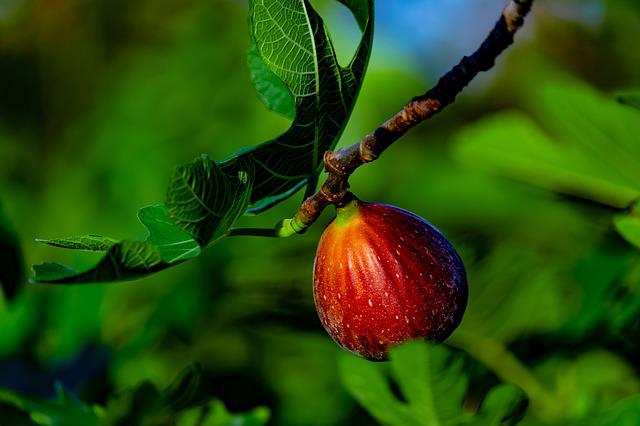
7. Not for Potted Trees
Avoid putting coffee grounds directly in potted fig tree containers. The soil just doesn’t have enough microbial activity to properly break them down, and in this more restricted environment the coffee grounds may contain too much acidity or caffeine to be beneficial. Add composted grounds instead.
Related: The Best Potting Soil for Fig Trees (Plus How to Make It)
8. Observe Your Plants
Is the foliage turning yellow or brown? Does the growth of the fig tree seem to be slower than usual? Are there issues with fruit production? Or does it seem to be a little greener and more healthy-looking? Observation will help you know whether using coffee grounds is a good or bad idea for your fig tree.

